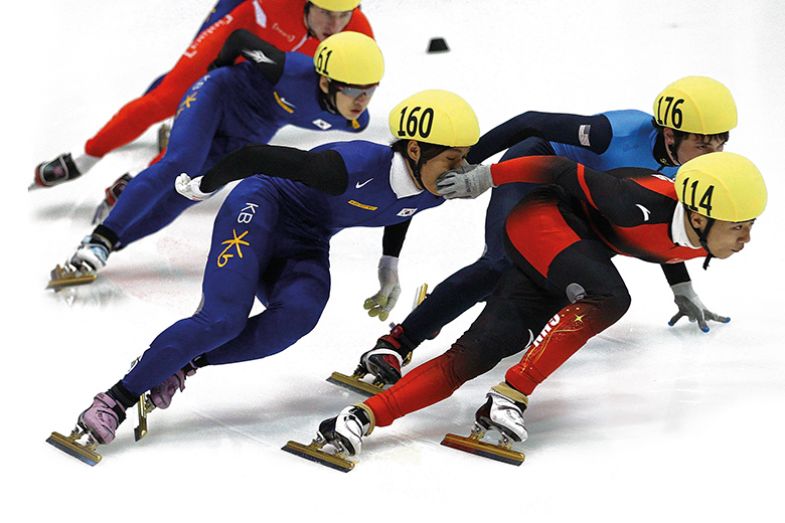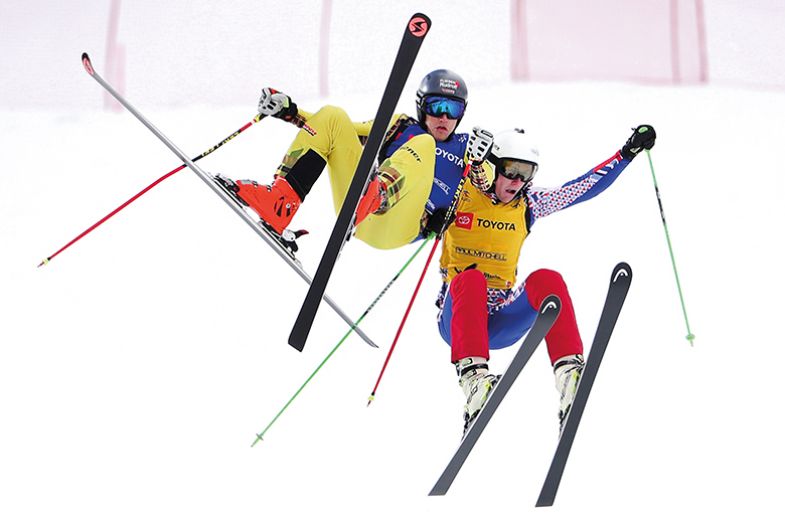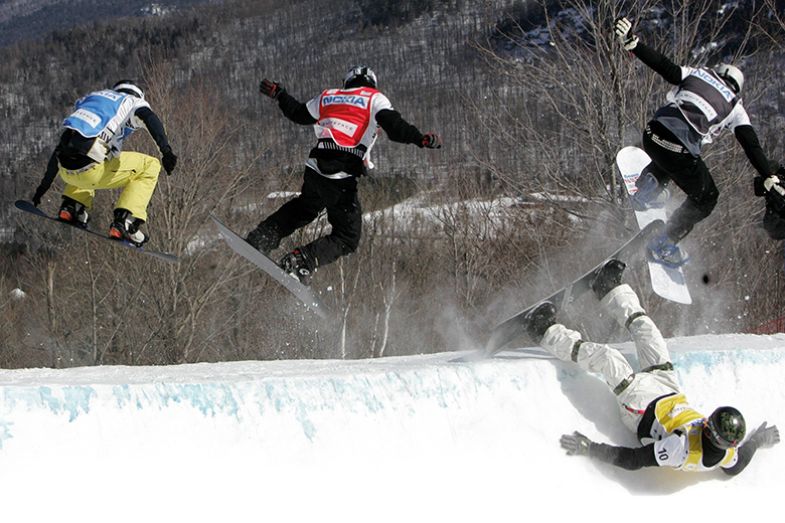点击阅读英文原文
“当我的同事们不回复我的邮件时,我意识到了有什么不对。”莎拉(化名)说道。她在准备一篇期刊论文时注意到了一些不同寻常的事。
这位物理学家解释说:“我花了几周时间为我们撰写的理论性论文做了数学模型。虽然我不是论文的主要作者,但我为这一项目确定了一些条件,并帮助弄清了结果。”然而莎拉随后得知,其他作者在没有通知她的情况下把她从作者列表中移除了。她认为这和她几个月前离开了博士后职位有关。她说:“我现在身处一个遥远的国家,没有从事学术工作,个人生活也有些困难,所以他们认为我不会追究这件事。”
值得庆幸的是,莎拉最终说服共事者她的贡献也是有价值的。虽然就排名看,她仿佛做了最小的贡献。她回应说:“我的名字出现在那篇论文上很重要,这是我过去工作的证明。”
她的经历说明确定学术论文作者身份的过程多么令人焦虑且明显不科学。在一些学科中,尤其是像高能物理这样需要庞大团队的学科,通常以字母顺序列出作者。然而莱顿大学(Leiden University)定量科学教授卢多·沃特曼(Ludo Waltman)在2012年的分析中指出,采取这一做法的比例正在下降,在2011年发表的所有文章中只占4%。
与此相对,大部分学科在出版物中按照贡献重要性排列作者。对处于职业早期的研究者来说,在这种排列方法下的位置尤为重要。在当今这个时代,永久性学术职位的竞争相当激烈,在高评分论文中位列第一作者甚至第二作者与否可能左右一个人在学术界的去留。英国环境学家迈克尔·哈塞尔(Michael Hassell)和罗伯特·梅(Robert May)还年轻时,曾于1973年在伦敦皇家学院的草坪上进行槌球比赛决定作者排序。然而那个时代已经一去不复返了。
和人们的愿望相悖,我们很难对论文的思考和实践贡献的相对价值进行比较。例如,为关键实验献策是否比进行众多实验更值得认可?有人进行了众多实验操作,却因非个人原因得出负面结果;与做了较少实验但幸运地得出了想要的结论的人相比,二者的贡献又该如何衡量?如今,更多的研究涉及到大型跨学科团队,有时甚至需要多个项目负责人。在这些项目中,哪怕排除无可避免的实验室内部权力斗争的影响,对作者排序的决定也只会更加艰难。
对处于职业早期的研究者来说,是否要冒着与能够左右自己职业生涯的当权者为敌的风险,为作者排序进行争论,这是另一个顾虑。一位也想匿名受访的博士生告诉泰晤士高等教育,她在一家研究机构实习时写了一篇论文,但没有被列为第一作者。她将论文投稿给期刊,但她的导师称因为她“届时将无法回答审稿人意见”而被降到较低作者排名。
“我的事业才刚刚开始,所以我没有正式地提出争议……我的研究空间很小。”她解释说,“现在我都会留下书面证据,并且不会寄出任何没有署名的文件,以防同样的事情再次发生。”
莎拉也担心讲述她的经历会招致前合作者,包括前导师的批评。因此,她也要求泰晤士高等教育不要使用她的真名。然而为了寻回博士后工作应得的回报,她必须冒着与这些人争执的风险。
“我读博期间的导师拒绝帮助我发表文章,所以我的简历在学术界看来不是很有竞争力,”她解释说。但是她为了得到博士后职位和发表文章所做的牺牲很大,以至于无法任由事态发展。“我搬到了地球的另一边,离开了朋友,放弃了许多人际关系,工作了很长时间,甚至连新年那一天也在工作。研究真的就是你生活的全部内容。而他们还说只要不发表文章,你就一无是处。”
诺丁汉大学(University of Nottingham)物理学教授菲利普·莫利亚提(Philip Moriarty)认为争取作者排序中的地位是必要的,因为有力的发表经历在申请学术职位时十分重要。
莫利亚提说,他在1997年得到诺丁汉大学凝聚态物理学的讲师职位,如果凭当年那份简历,他现在“连入围名单的边都摸不到”。他说:“原先只会在学者间造成小小争议的事,现在可能定义一个人的职业。”
但莫利亚提也认为处于职业早期的研究者在争取文章作者排名时应该更谨慎。他说,监督论文的项目负责人(PI)作为通讯作者(一般位于作者列表的最后)“将会在好几年中给你写推荐信,而你这是在挑战他们的判断”。他补充说,任何申诉结果都将“取决于导师的性格,你与他们的关系,以及你是否可以在不激怒他们的状况下提出这样的问题”。
莫利亚提说,一般这种争论都在职业早期研究者和其导师关系破裂时发生,所以寻求可信第三方的介入会有所帮助。然而他表示,这一选择也伴随着风险:“有人在一个博士生指导会议上提出这一建议。一位参会者非常坚决地认为你应该‘保持低调’,因为你一旦激怒了导师,就哪也去不了了。”

然而,当赌注很高时,激情也会变得激烈,实用主义可能被抛至脑后。
开放存取出版社欣达维(Hindawi)的出版伦理负责人马特·霍奇金森(Matt Hodgkinson)说:“当有人宁愿他们的工作成果不见诸文字也不愿意停止争论时,确实有文章因作者顺序问题被撤回。” 该出版社旗下拥有230个同行审议期刊。他补充说:“被排除在作者名单中的人可能会选择把论文搁置一段时间,然后改变主意并联系期刊。当一篇文章涉及多个博士或博士后时,我们经常看到有人要争抢第一作者。”他表示,解决一篇文章的科学性贡献的争端“通常涉及实验室政治”。
在一篇论文刊登于2015年8月的《急诊医学案例报告》(Case Reports in Emergency Medicine)后,一位土耳其医学生声称他应被列为作者之一。这一牵涉到欣达维期刊的争论持续了近4年,并以这为医学生的胜利告终。这一结果来自于土耳其知识产权法庭的裁决,其中有未经证实的说法,即作者名单的疏漏是出于宗教和政治考虑。霍奇金森说:“不对实验室进行突击检查,我们那没法确认谁做了什么,所以这件事被交给研究机构,然后被送至法庭。”期刊于2019年7月发表了一篇文章表达对该论文的关注,并强调了法庭的判决。
霍奇金森说:“很少有向我们投稿的文章牵涉到官司,但目前较重要的几桩审判都与作者署名有关。” 据霍奇金森说,更常见的情况是对作者署名相关的激烈争论让出版社感到头疼。由出版伦理委员会(Council on Publication Ethics)列出的匿名案例审阅中,类似争端占1/4。上个月,惠康信托(Wellcome Trust)对科研工作者进行的一份调查显示,4065名参与者中,有40%的人称曾被他人占取自己的工作成果,其中短期或合同制的研究者表示他们更易受到资深同事的这种剥削。
这一调查结果与另一项类似研究的结论吻合。该研究表明,有1/3到2/3的研究者表示他们曾被卷入作者署名权的争论。相关文章由德克萨斯大学里奥格兰德河谷分校(University of Texas Rio Grande Valley)生物学教授泽恩·福克斯(Zen Faulkes)于2018年发表于期刊《研究诚信与同行审议》(Research Integrity and Peer Review)。
目前,决定作者贡献的最佳模板是所谓的“温哥华体系”(Vancouver Convention)。这一方法由国际医学期刊编辑委员会(International Council of Medical Journal Editors)于1978年创立,并于2014年做了最新修订。但福克斯认为,这些规则在解决争论方面并无用处,因为它们是“自上而下建立的,并没有获得大多数科学家的支持”。此外,他补充说,众多医学刊物的编辑们“看起来并没有在执行他们自己制定的规定”。
在福克斯看来,这种程度的不和谐表明需要一个新的荣誉分配模式。一个受欢迎的解决方法是给予多个作者共同第一作者的位置。根据妮可·布罗德里克(Nichole Broderick)和亚瑟·卡萨德瓦尔(Arturo Casadevall)于2019年1月进行的研究,2000年这一现象只占出版物的1%,而到2009年已经上升到8.6%。
据这篇发表在eLife上的文章《超级研究:同等贡献作者中的性别不平等》(Meta-research: gender inequalities among authors who contributed equally)称,到2019年,在一些期刊上发表的大部分文章都采用共同第一作者,其中2篇论文有11位共同一作。例如,2019年前3期《临床调查》(Journal of Clinical Investigation)中发表的28篇文章里,有12篇列出了3名或以上的共同一作,其中一篇有9位共同一作。
然而,不是所有人都赞同这一做法。一些人认为这是一种不道德的责任规避,并会给一些明显作出更少贡献的人以不应得的荣誉。此外,研究者还发现,女性科学家常被列在男性共同作者之后,即使是在二者贡献明显相同的情况下。
欣达维的霍奇金森注意到:“即使是共同一作,列在第一位的人还是能得到更多好处。毕竟这仍然是在科学界流通的通货。”因此,由于共同一作通常会按字母顺序排列作者,姓氏首字母在字母表前列的人可能得利最多。此前关于按字母顺序排列作者的研究表明,姓氏首字母在字母表偏后的研究者也意识到这一现象,并且逐渐不倾向于这种做法。更糟的是,有证据表明这种“字母主义”对一些种族——如东亚人——更加不利。
福克斯提出了一种“类似电影和电视的署名系统。在这个系统下,各种贡献按任务排列”。对他来说,不能表明作者到底贡献了什么的列表不异于无用。
他说,“如果新的《星球大战》电影是一篇科学论文,你会看到主演黛茜·雷德利(Daisy Ridley)、导演J·J·艾布拉姆斯(J. J. Abrams)、作曲约翰·威廉姆斯(John Williams),和布景罗斯玛丽·布兰登伯格(Rosemary Brandenburg)都混杂在一个列表里,如果没有注明他们分别做了什么,这会显得很荒唐。”
但福克斯对这种电影式署名系统的未来持悲观态度,考虑到“任何创新被科学出版界采用得有多慢”。然而这一进程已经有了显著进展。一些期刊详细列出了每个作者对文章的贡献,包括世界最大的科学、技术、工程和数学出版社爱思唯尔(Elsevier)旗下的许多期刊。
这些期刊采取了“投稿人角色分类”(Contributor Roles Taxonomy, CRediT)系统。这一系统要求主要作者对每个作者的贡献进行准确总结,包括与作者权有关的14个不同项目:概念化、数据策管、形式分析、资金获取、调查、方法论设计、项目管理、资源提供、软件开发、监管、检查、可视化、写作,及审核与编辑。
这一做法源于2012年由哈佛大学(Harvard University)和惠康信托主导,研究者、出版社等参与的研讨班,并已在150本爱思唯尔的期刊中实施。根据12月的新闻稿,作者与编辑对此举的反馈都“相当正面”。新闻稿还称将在爱思唯尔旗下2500本期刊中的1200本推行这一方法。2020年还将实施于“几百本”其它期刊。
信息管理标准研究推进联盟(Consortia Advancing Standards in Research Administration Information,CASRAI)促成了上述研讨班。据CASRAI的官方网站显示,目前已有30家出版社采取了这一系统,包括施普林格(Springer)、威利(Wiley)和牛津大学出版社。但并不是所有出版社都强制要求遵循这一系统。

然而,在这一系统中,作者们仍按被认为的贡献排序。因此,即使这一创新被普遍采用,对这一排序的争议也不大可能消失。那么对文章的不同贡献应该如何衡量呢?更重要的是,灵感与实操孰轻孰重?
福克斯说,“在这一领域,想法并没那么重要。所以我倾向于给资料收集和处理更多的重视。”而其他人则不太愿意树立一个在项目中长时间工作就能立刻名列作者,甚至是主要作者的观念。
“有很多学生一直跟着我工作,但是他们负责录入数据或扫描。这些工作不足以让他们被列为作者。”亚利桑那州立大学(Arizona State University)特奥蒂瓦坎研究实验室(Teotihuacan Research Laboratory)主任马克尔·E·史密斯(Michael E. Smith)说道。他的考古项目关注墨西哥和中美洲的阿兹特克文明。
在职业早期,史密斯曾慷慨地把作出较小贡献的人列入作者名单,而他有些后悔。如今在他看来,这一举动使得其他共同作者的实际贡献贬值了。“当时能把大家放入作者名单我觉得很高兴,但我现在不确定这是不是正确的做法。这是关于界限的问题,”他思考道,指出如果在项目中的工作时间是主要考虑因素的话,在墨西哥雇佣的帮忙挖掘的人也可以被列为共同作者。另一方面,“当一个学生做出真正具有创造性的贡献,或者发现了我无法发现的事情时,他们的贡献应该得到认可。”
瑞典乌普萨拉大学(Uppsala University)结构生物学教授林恩·卡默林(Lynn Kamerlin)认为,决定谁是第一作者是一个尤为“重大的责任”,而且通常十分艰难。她说,有时候项目开始时的负责人提前退出了,把项目交给剩下的人完成,这种情况下要决定第一作者就更为困难。
福克斯认为,“因为‘我创立了一个项目’而产生的所有权感不应该比在项目中所做的工作更重要,因为这主要是自负的表现。” 卡默林也赞同这一原则,然而在某些案例中她仍感觉难以在相对的主张中作出裁决。
“如果有人在离开前做了大部分工作,那决定起来就容易一些。但是我也见过相反的情况。”她说,“有些继任者发现项目创始人制造出一些严重问题,需要用重复的实验和大量工作来解决。所以新的主导人显然应该是第一作者。这种决定并不很受离开的人欢迎,但最终成为第一作者的人情绪也很激烈。”
卡默林也赞成对共同作者所做工作进行更具体的描述,但并不认为这是解决争端的简单有效的方法。她说,“这一做法基于一篇文章涉及实验室的5到10人的想法,但是如今的研究有时需要上百名研究者。”她认为,在这些研究中,“主导工作的主要作者们”应该被列在不那么重要的合作者之前。
她补充说,至于电影式的列表,则是“假设每个人都讲述了自己贡献的真实情况”。“有时,人们对于做了什么可以名列作者有很奇怪的误解。有些人认为给一些建议就能被加入作者列表。”

有时资深科学家对一篇文章贡献甚少却把自己加入作者列表,这时问题尤其突出。这种行为下,一些大型团队的领导者每年可以发表上百篇文章,并给他们带来优越的研究指标和随之而来的职业嘉奖。然而,如果后期暴露出错误或恶行,他们又会声称自己没有过多介入,实际实验由低级别研究员操作,并借此逃避追责。
莫利亚提认为:“仅仅因为你是团队领导就把自己的名字挂到文章上是很不道德的行为。”他很怀疑世界上最多产的那些科学家们是否能找到时间阅读他们的成果,更别提监督、修改并把论文提交给期刊了。
莫利亚提承认:“如果他们每周在实验室工作80到100小时,那还能解释。”然而实际上,这种多产只可能出现在“博士后每天都监管博士生”的实验室里,而这些人也是这些知识性成果的真正产出者。但是他认为,这种情况下,博士后才应该被列为通讯作者。
卡默林也同样对PI自动被列为最后一位作者的做法持怀疑态度。这一做法的理由一般是他们为研究“提供了基础设施”。“这对做研究的年轻人非常不公平。”她说。
有一种理论说,一篇文章的作者中如果有知名科学家,会更容易被编辑和读者注意到。她认为这样做的结果是实际上进行工作的低级别研究者会被投资人和招聘小组忽视。“最近我听说有一位导师因为这个原因要求不在一位博士生的文章上署名。这是一个很成熟的举动。”她补充说。
但是福克斯并不认为资深科学家得到了不合理的作者署名。他解释说,很多PI默默地做了很多工作才能使其他人有发表文章的机会。他说,“我听到很多人说,‘这个人什么都没做!’但是我很少听见PI说,‘我做了。这是我为什么应该署名的原因。’”但这不代表PI不应该名列作者之一。
他回忆说,“很久以前,我投了一篇文章,没有署我导师的名字。不过这文章后来没被发表。但我觉得我做得很不对。我低估了我导师在促成这个项目上所做的努力。但随着经验的增长,我现在已经能够明白那个人是多么应该被列在投稿文章的作者列表里。作为一个学生,我当时不知道作者署名是多么重要,而且也不明白在文章首页排除某人的名字会有什么影响。”
这类争论出现的一个重要原因是,针对当下工作所能产生的论文的署名权,同僚们很少开诚布公地讨论他们的期待。这让每个人都为终身职位神经紧绷到最后一刻。但随着预打印服务器这样的技术创新的出现,文章提交到出版之间的时间大大缩短。提交后解决纠纷的时间和空间也受到压缩。
然而在如何评价和排列贡献值上缺乏一致大概仍是争执的最大原因。美国作家协会(Writers Guild of America)对如何确定影视作品中“实质性”的贡献有明确规定。但与此不同,科学领域作者署名的争端没有最终仲裁人。因此,福克斯认为,我们只能寄希望于同僚们可以尽早并更坦诚地对作者署名进行对话。
他说:“我从前的错误是因为作者署名是‘隐藏课程’的一部分。我认为在到达研究生后期或提交一篇论文之前,没有多少人曾接受过作者署名惯例的详细培训。”
然而惯例是一回事,如何解读惯例又是另一回事。学术工作者也不过是正常人,他们的整个学术生涯和身份都与发表状况挂钩。很难以想象会有什么严密的规则保证在这套规则下的学术出版不会有任何争议。关于学术出版已经有许多纠纷和犯规行为,因此减轻这方面的压力可能是从室内的拼死斗争重回槌球草坪上的聊天的唯一方式。
jack.grove@timeshighereducation.com
本文由陆子惠为泰晤士高等教育翻译。
后记
Print headline: Order, order




